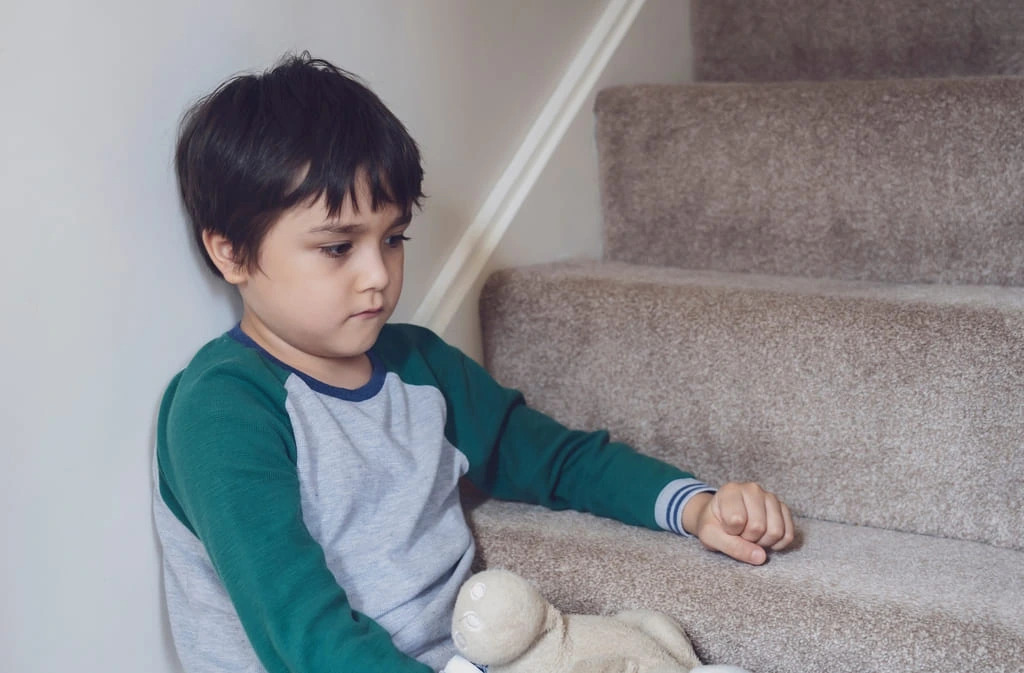What is Selective Mutism?
Selective mutism is one of the most common anxiety disorders that cause difficulty speaking in certain social situations. While selective mutism can affect younger children, language difficulties related to this challenge typically become apparent when the child enters the education system. A child with selective mutism can be very talkative with family members at home but silent with other children and teachers at school.
Selective mutism causes fear of social interactions, and most individuals with selective mutism have social anxiety or social phobia. It can also cooccur with different mental health struggles, such as obsessive-compulsive disorder and other anxiety disorders.
Children with selective mutism find it hard to initiate social communication or respond when they are verbally addressed. This can severely impact their social engagement and learning process. The anxiety and low self-esteem linked to selective mutism might prevent affected students from asking teachers for help when they need it and engaging in fun social activities at school.
Causes and Contributing Factors
Experts have not found a specific cause for selective mutism. However, several factors can put an individual at risk of developing this mental health challenge. In some cases, a family history of selective mutism and other anxiety disorders related to social isolation can lead to verbal communication challenges. Furthermore, many children develop selective mutism due to certain psychological and environmental factors. Below is a list of the main contributing factors and causes behind selective mutism.
Psychological and Behavioural Factors
Selective mutism is often linked to various psychological and behavioural factors. This difficulty can be caused by different intellectual disabilities and language disorders. Medical experts often relate selective mutism to the following challenges:
- Developmental delay
- Subtle learning difficulties (that make the person prone to shyness and high anxiety levels)
- Language and speech disorders
- Autism spectrum disorder
Environmental and Developmental Factors
Social and environmental factors can play a significant part in developing selective mutism. Different forms of traumatic experience, especially in the person’s family setting, can lead to anxiety disorder and verbal communication struggles. Below is a list of the most common environmental factors leading to selective mutism:
- Childhood abuse
- Challenging family relationships
- Bullying
- Self-esteem challenges
- Extreme poverty
- Death of a family member
Genetic Influences
Selective mutism can sometimes run in families. Many children with selective mutism have genetic predispositions to anxiety disorder. Even since infancy, they may show symptoms of severe anxiety (especially separation anxiety), shyness, moodiness, tantrums, and sleep disturbances.

Symptoms of Selective Mutism
The signs of selective mutism typically become apparent when the child starts interacting with people outside the family at school. The main indication of selective mutism is the drastic contrast in the child’s ability to interact with people at home (such as parents, siblings, and other relatives) and at school (teachers and peers). Children are usually talkative with their family members but can suddenly become still and unresponsive with people they don’t know.
Common symptoms include the following:
- Social isolation and withdrawal due to an intense fear of public embarrassment
- Struggling to maintain eye contact
- Blank facial expressions
- Reluctance to smile or constant smiling
- Using nonverbal communication (nodding, gestures, and facial expressions) instead of speech
- Shutdowns and mental paralysis in social situations
Impact on Communication and Social Interaction
Most children with selective mutism can maintain regular and appropriate communication with familiar people in a comfortable environment, i.e. family members at home. Parents often describe them as verbal, curious, and even boisterous. However, these children face severe behavioural challenges in other environments, such as nursery or school.
These challenges cause an overwhelming feeling as though the child is on stage all day. Therefore, children can find it difficult to communicate their needs. For example, they often hesitate to ask the teacher for help regarding parts of the curriculum they struggle to grasp. This can take impact a student’s learning process.
Furthermore, selective mutism affects children’s ability to build meaningful relationships with their peers. Children with this developmental condition find it hard to make friends and participate in fun social activities at school. Therefore, these children need adequate coping strategies to prevent social withdrawal and isolation.
Selective Mutism in Children and Adults
While the effects of selective mutism usually become apparent in a person’s childhood, it can persist throughout adolescence and adulthood. Speech difficulties bring unique struggles at different stages of the person’s life.
Selective Mutism in Childhood
Individuals with selective mutism typically begin showing symptoms in their childhood. It starts interfering with children’s lives when they join the education system and communicate with people outside the family.
Children exhibit a significant disparity in their social skills at home and in the classroom. Due to their social phobia, they can be chatty and communicative with their family members, but silent and withdrawn in less comfortable environments.
Selective Mutism in Adolescents and Adults
Contrary to popular misconceptions associating selective mutism with childhood, it can persist in adolescence and adulthood. Selective mutism in adolescents is often mistakenly perceived as a sign of rudeness and defiance instead of anxiety.
Adults with selective mutism face unique difficulties concerning employment and professional performance. Their communication challenges might prevent them from applying for jobs that involve teamwork and talking to customers and interviews may be a challenge. However, with proactive support, every individual with selective mutism can overcome their challenges and lead a fulfilling life.
Assessment and Diagnosis
Individuals with selective mutism can obtain an official diagnosis through a comprehensive assessment that involves the following steps:
- Interviews with parents, caregivers and teachers
- Evaluation of the child’s speech and language skills
- Collaboration with various specialists, such as paediatricians, child psychologists, guidance counsellors, behaviour analysts, and social workers
During this process, the expert team can rule out other conditions related to language struggles, such as hearing challenges or speech delay. Furthermore, the interviews with parents and teachers can help specialists assess the home environment, family medical history, and the child’s manner of communication.


Coping Strategies for Individuals with Selective Mutism
Children, adolescents, and adults with selective mutism need tailored accommodations and coping strategies to integrate into their school and work environment. In addition to professional treatment methods, parents and teachers can take several measures to help students manage this challenge.
Self-Help Techniques for Managing Anxiety
Instead of being forced to engage in stressful situations that involve spoken communication, children with selective mutism should work in smaller groups and receive appropriate accommodations for their challenges. To reduce anxiety, affected children can engage in fun hobbies like puzzles, reading, or art. People can also engage in breathing exercises and meditation to reduce panic.
Building Confidence and Self-Esteem
Acceptance and support from family members and teachers are crucial in improving the confidence and self-esteem of children with selective mutism. While rewarding positive steps benefits children with selective mutism, they should never feel pressured to speak due to fear of punishment.
Early Intervention and Support
Early and adequate intervention can help individuals with selective mutism overcome their speech difficulties. Children can benefit from speech therapy and behavioural therapy. These forms of treatment will offer your child new settings and activities where they can improve their language skills.
Through specialised techniques with small incentives and praise, individuals with selective mutism can learn to control their social phobia. The gradual nature of behavioural treatment helps patients improve their self-esteem and prepare for more challenging experiences.
Does Selective Mutism Go Away?
Unlike shyness, a personality characteristic, selective mutism doesn’t go away on its own and can impact the quality of life. Children, adolescents and adults need adequate coping strategies to lead fulfilling lives and overcome challenges.
Support for Individuals with Selective Mutism with Unique Community Services
At Unique Community Services, we establish a humanised, person-centred approach to support individuals with complex care needs, including selective mutism. Our dedicated team delivers proactive care services for adults and children with selective mutism in their own homes, allowing them to stay close to their loved ones while regaining their speech skills.
In order to meet every individual’s needs and assess their personal preferences, our trained clinicians work closely with relevant mental health professionals and family members. The individual’s privacy and dignity are imperative factors in our care plans, and we strive to create a comfortable environment for people with selective mutism to overcome their social anxiety and reach their full potential.
If you have a loved one struggling with selective mutism, Unique Community Services is the right place for you. We offer CQC-regulated home care services in Manchester and Leeds.
Contact us now, and we will outline a tailored care plan catering to your specific requirements.




